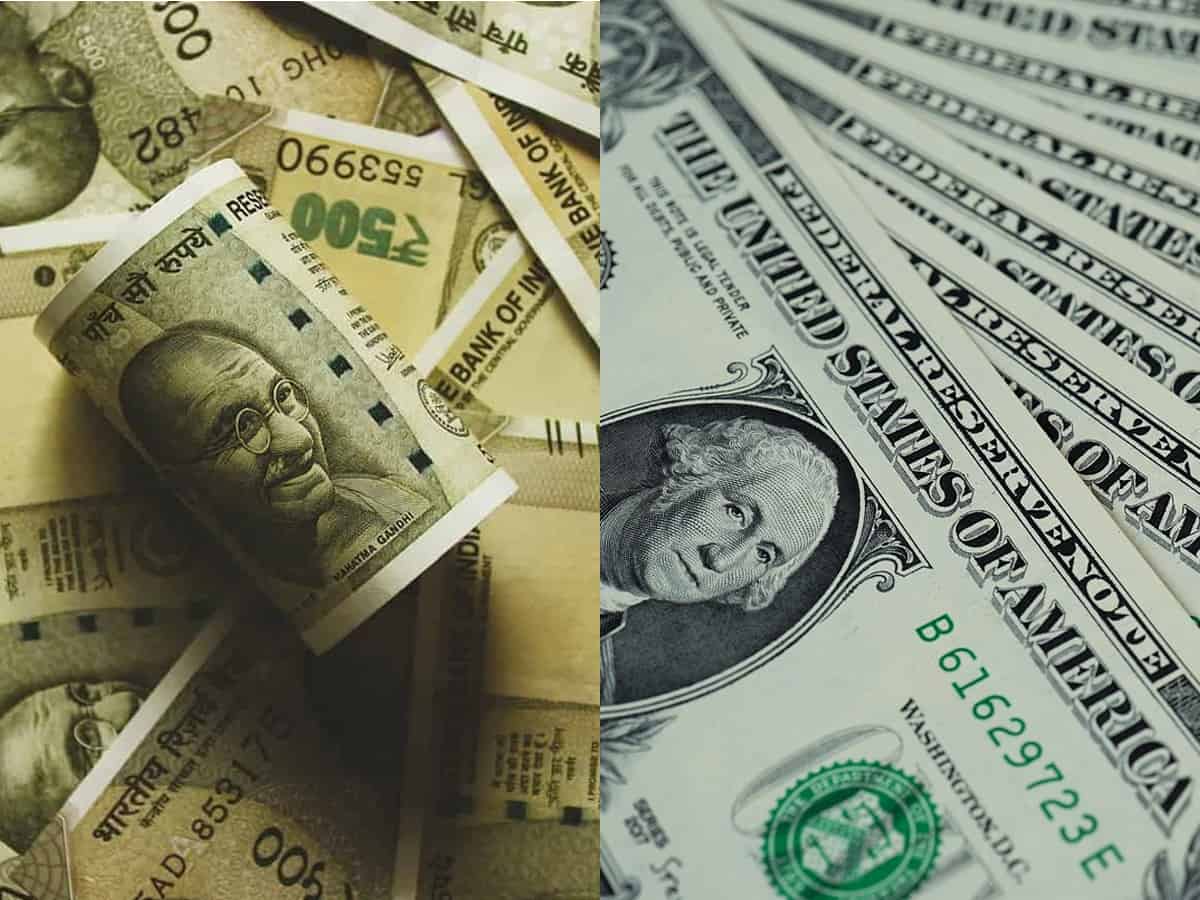
New Delhi: A marginal contraction in exports coupled with a continuing surge in the country’s import bill through the month of August has renewed concerns over India’s widening trade deficit and its impact on the broader economy.
The rupee, which has already depreciated 7 per cent against the US dollar through this calendar year, will likely remain under pressure, adding to inflation and macroeconomic vulnerabilities, analysts and experts said.
On Saturday, the government released preliminary data that showed India’s exports fell by 1.15 per cent year-on-year to USD 33 billion in August, while imports rose 36.8 per cent to USD 61.7 billion.
For the first five months of this fiscal year (April-August), exports totalled USD 192.6 billion, while imports stood at USD 317.8 billion, leaving India with a record trade deficit of USD 125.2 billion, or nearly two and half times the level in the same period a year ago. In April-August last year, the trade deficit stood at USD 53.8 billion.
If the current trends continued through the remaining part of the fiscal, India’s trade deficit may touch USD 250 billion by March 2023, analysts said. This would compare to a trade deficit of USD 192.4 billion in the previous 2021-22 fiscal year.
A widening trade gap has a direct impact on the current account deficit (CAD), which in turn influences the Indian rupee’s resilience, investor sentiments and macroeconomic stability. India’s CAD, the broadest measure of India’s sell-and-buy balance with the rest of the world, is likely to touch USD 105 billion or 3 per cent of the GDP this fiscal.
The sharp deterioration in the export-import imbalance has come on the back of several developments that include the ongoing Russia-Ukraine war that caused a huge spike in global oil and commodity prices, supply chain bottlenecks due to the slow easing of COVID restrictions in China and pent-up demand for imports as the manufacturing sector recovered from the pandemic’s shadow.
Also, the July 1 introduction of an export duty on diesel and jet fuel (ATF) to take windfall profits that refiners were making has dented exports. Petroleum products are the second biggest forex earner behind engineering goods. The new duty, together with obligations for refiners to supply in the domestic market first, has led to a 10-11 per cent fall in petroleum product exports.
The export fall comes as the oil import bill balloons. India spent about USD 99 billion on oil imports in April-August, more than the USD 62 billion spent in the entire 2020-21 (April 2020 to March 2021) fiscal and more than half of the USD 120.4 billion spending in the 2021-22 fiscal.
While India is 85 per cent dependent on imports to meet its oil needs, a domestic coal crisis also forced the tapping of overseas supplies of the dry fuel for meeting the power demand during peak summer.
In recent months, the government has brought several measures to rein in imports. It has raised the import duty on gold to 12.5 per cent from 7.5 per cent, imposed restrictions on the import of several items, including electronic goods and set a target to increase the share of ethanol-blended fuel in domestic consumption from 10 per cent now to 20 per cent by 2025.
While these measures have helped in some moderation in the growth of the import bill, as reflected in the August numbers, it is unlikely that the broader trend will change much. That is because most of the pressure points are on account of such imports, the demand for which is inelastic. These include crude oil and petroleum products, coal, chemicals and critical electronic components, such as semiconductor chips that account for more than 60 per cent of the import bill. Also, India is highly dependent on the import of vegetable oil.
Besides oil, electronic goods imports have risen by almost 30 per cent to USD 32.6 billion in April-August, while coal imports nearly tripled to USD 26.8 billion and vegetable oil rose by a third to USD 91 billion. Gold imports are, however, down 13 per cent at USD 16 billion.
It is hoped that global commodity prices would continue easing in the months to come. A linear extrapolation of the April-August data for the full fiscal could, therefore, be misleading, said Ajay Sahai, director general of the Federation of Indian Export Organisations.
Also, many companies are front loading imports due to high freight costs and logistics disruptions globally, Sahai added.
Even then, Sahai said, “the (trade) deficit may rise to USD 230-240 billion this year.”
Oil, gold, fertiliser, and coal imports would continue to be the pressure points in the future, he noted.
On the other hand, a slowing global economy has also affected the demand for Indian exports. After growing at an average 18 per cent in the first four months of the current fiscal, exports registered a marginal contraction in August, as the latest data showed.
Talking to reporters after the release of the latest trade data on Saturday, Commerce Secretary BVR Subrahmanyam said the government expected exports to pick up, going forward. The optimism is based on new opportunities as economies in the West diversify their imports away from China, he said, adding the trade deals with UAE and Australia were expected to bear fruit soon.
Subrahmanyam said the government is confident that exports would touch USD 450 billion this year compared to USD 400 billion last year.
Not everyone agrees, however. Mumbai-based engineering exporter and Chairman of Technocraft Industries, Sharad Kumar Saraf said that there are recessionary trends in the US and Europe because of the Ukraine war, and that will continue to impact India’s exports.
“We may barely touch USD 400 billion exports this fiscal. I do not foresee the trade deficit going down in the coming months. It is also driven by external factors,” Saraf said.



